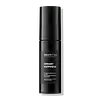What's inside
What's inside
 Key Ingredients
Key Ingredients

 Benefits
Benefits

 Concerns
Concerns

 Ingredients Side-by-side
Ingredients Side-by-side

Water
Skin ConditioningC13-15 Alkane
SolventPropylene Glycol
HumectantCaprylic/Capric Triglyceride
MaskingIsoamyl Laurate
EmollientCetearyl Olivate
Sorbitan Olivate
EmulsifyingPropanediol
SolventGlycerin
HumectantCyclodextrin
AbsorbentTocopheryl Acetate
AntioxidantSaccharide Isomerate
HumectantPanthenol
Skin ConditioningEctoin
Skin ConditioningRetinal
Skin ConditioningRubus Chamaemorus Seed Oil
Skin ConditioningPentylene Glycol
Skin ConditioningLonicera Japonica Flower Extract
Skin ConditioningLonicera Caprifolium Flower Extract
PerfumingHydroxyethyl Acrylate/Sodium Acryloyldimethyl Taurate Copolymer
Emulsion StabilisingLactic Acid
BufferingCitric Acid
BufferingSodium Citrate
BufferingDisodium EDTA
Sodium Levulinate
Skin ConditioningSodium Anisate
AntimicrobialWater, C13-15 Alkane, Propylene Glycol, Caprylic/Capric Triglyceride, Isoamyl Laurate, Cetearyl Olivate, Sorbitan Olivate, Propanediol, Glycerin, Cyclodextrin, Tocopheryl Acetate, Saccharide Isomerate, Panthenol, Ectoin, Retinal, Rubus Chamaemorus Seed Oil, Pentylene Glycol, Lonicera Japonica Flower Extract, Lonicera Caprifolium Flower Extract, Hydroxyethyl Acrylate/Sodium Acryloyldimethyl Taurate Copolymer, Lactic Acid, Citric Acid, Sodium Citrate, Disodium EDTA, Sodium Levulinate, Sodium Anisate
 Reviews
Reviews

Ingredients Explained
These ingredients are found in both products.
Ingredients higher up in an ingredient list are typically present in a larger amount.
Isoamyl Laurate is created from isoamyl alcohol and lauric acid. It is an emollient and traps moisture underneath.
This ingredient helps give products a silky feel and is considered a silicone alternative.
This ingredient may not be fungal acne safe.
Learn more about Isoamyl LaurateRetinal is a form of retinoid. Retinoids are the gold-standard class of anti-aging ingredients.
Retinal has many benefits as other retinoids: improve skin texture, reduce large pores, reduce the effects of aging, reduce the visibility of dark spots, heal scars, and fight acne.
Studies show retinal may work at a faster rate than retinol due to its structure.
All retinoids have to be converted into retinoic acid before starting to work. Some retinoids take several steps of conversion before binding. Retinal is only one step away, making it more potent.
Like other retinoids, retinal may be irritating. It is best to ease into using this ingredient frequently.
Using the 'ramp up' method, start by using retinol once a week. This gives your skin time to adjust and decrease irritation. Once you feel ready, you can slowly increase the frequency of retinol use.
Using retinoids will increase sun-sensitivity in the first few weeks of use. Though studies show retinoids increase your skin's natural SPF with continuous use, it is best to always wear sunscreen and sun-protection.
Learn more about Retinal